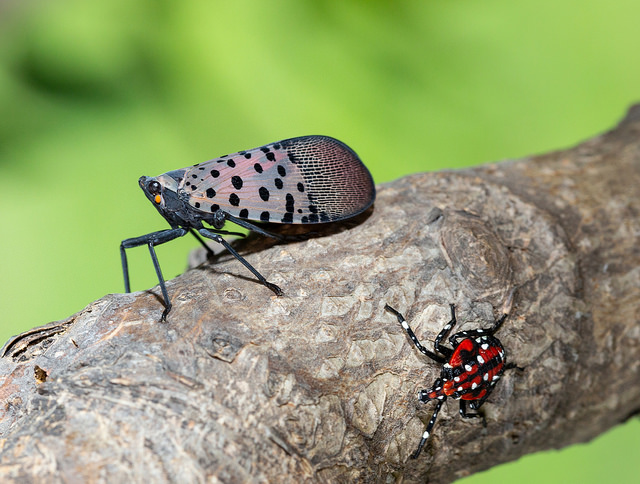Introduction
Spotted lanternfly (Lycorma delicatula), also known as lanternm+oth, is a moth-like insect that infests a wide range of plants. It is named for its resemblance to a Chinese lantern. Spotted lanternfly is a member of the family Fulgoridae, a group of insects collectively referred to as planthoppers. Spotted lanternfly is native to China, India, and Vietnam. The insect has also become established in the United States, where it poses a threat to many ornamental and economic plants, particularly those related to the farming, logging, and wine-making industries.
Distribution & Habitat
Spotted lanternfly is widespread across China, India, Vietnam, South Korea, and Japan. In the United States, it has been reported in Connecticut, Delaware, Maryland, New Jersey, New York, Pennsylvania, and Virginia.
Hosts
Spotted lanternfly feeds on many plants, but tree-of-heaven is the insect’s preferred host. Other potential hosts include apple, apricot, American beech, American linden, American sycamore, big-toothed aspen, birch, black birch, black cherry, black gum, black walnut, cherry, dogwood, grapes, hops, Japanese snowbell, maple, oak, paper birch, peach, pignut hickory, plum, sassafras, serviceberry, slippery elm, tulip poplar, white ash, and willow.
Description
Egg masses consist of 30 to 50 brown seed-like eggs that are laid vertically in 4 to 7 columns on the surface of host plants. Newly laid egg masses are covered by the adult females in a white to grey substance, which becomes dry and cracked over time. The nymphs resemble large ticks. Immature nymphs are black with white spots. As the nymphs grow, they develop red patches. The adults are approximately 1 ½ inches long and wide. Both genders possess wings that they use to fly. The hind wings feature red and black patches, with a prominent white band. The forewing is colored grey, and dappled with black spots. The wing tips are outlined in grey, and covered in black spots. The legs and head are entirely black, while the abdomen is yellow, with large black bands.
Life Cycle
Spotted lanternfly produces one generation per year. In late fall, the females each lay 30 to 50 eggs on various flat, vertical surfaces. This can include the surfaces of plants, stones, vehicles, outdoor furniture, and buildings. The eggs overwinter. They hatch the following spring, revealing masses of nymphs. The nymphs insert their proboscises into the host, and proceed to feed on sap and other plant liquids. As they feed, the nymphs pass through four instars. They reach maturity in July, morphing into adults. The adults continue to feed until fall. By September, the adults begin to mate. The males expire shortly thereafter. Any females that have been fertilized commence oviposition. If temperatures are sufficiently warm, the egg laying period may persist into December. The eggs overwinter until the following spring, beginning the cycle anew.
Symptoms of Infestation
As the nymphs and adults feed, they excrete a sugary substance called honeydew. Ants and wasps will colonize the honeydew, and can often be observed in abundance on plants infested by spotted lanternfly. When enough honeydew accumulates on a plant, it may drip onto underlying surfaces. Sooty mold can form on plants coated in honeydew. If the sooty mold becomes widespread, it can cause the plant to assume a blackened appearance. Affected trees will develop wounds that weep sap, which can leave a grey or black streak along the trunk.
Management
- Egg masses can be scrapped off of infested plant surfaces, bagged, and properly disposed of.
- The egg masses may also be placed in alcohol or hand sanitizer. When spotted lanternfly populations are small, this will help to reduce the number of burgeoning nymphs.
- Systemic insecticides may be effective at combating the crawlers and adults. Initial applications can be performed in mid to late spring, after the crawlers emerge.
- In China, a parasitic wasp preys on the eggs.


